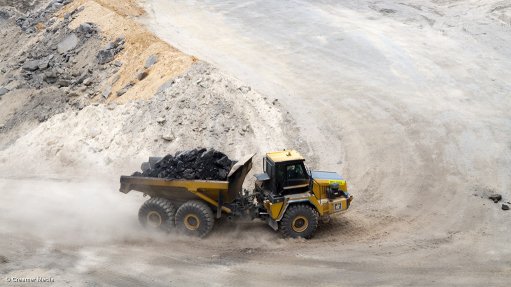
FIGHTING FOR SURVIVAL Coal miners are reinvestigating their capital expenditure and expansion programmes to ensure they do not incur unnecessary expenditures
According to the coal valuation curve of independent mining and minerals management adviser Venmyn Deloitte, the enterprise values of coal companies operating in South Africa have dropped by 30% on average from June 2014 to June 2015.
Venmyn Deloitte associate director Chris de Vries tells Mining Weekly that the decrease is likely as a result of lower-than-expected thermal coal API4 prices, which plunged by 18% during the period to about $61/t, significantly lower than the April 2011 high of $124/t.
He further points out that many producers have been unable to offset their export losses by selling coal domestically, as domestic prices are sometimes export parity based and have, therefore, “followed the export index downwards”.
He adds that some coal mines supplying State-owned power company Eskom are supplying coal at prices below the production cost, owing to rand-denominated fixed-price structures.
“Coal producers can switch to domestic offtakers for higher rand-denominated prices, but there is limited short-term flexibility to switch from export to domestic supply, owing to current export offtake agreements, as well as port and rail commitments. Further, domestic demand is not sufficient to make this a viable option for all operations,” De Vries explains.
Meanwhile, the expected drop in China’s economic growth has adversely affected the thermal and metallurgical coal market worldwide, he says, adding that this has been exacerbated by the country’s increased domestic coal production. While demand from India is expected to offset lower Chinese coal imports, De Vries asserts that it will take a number of years before this boosts coal prices.
He advises coal producers to look at effectively decreasing operating costs to weather the storm, noting that many producers are doing this through asset-management and improvement schemes, and operational excellence programmes.
However, many major coal producers have chosen not to cut production, despite the low-price environment, which has been exacerbated by supply strength, De Vries adds.
“Companies are reinvestigating their capital expenditure and expansion programmes to ensure that they do not incur unnecessary expenditure. “Coal producers are also, in some cases, mothballing higher-cost operations and are looking for synergistic opportunities through corporate action.”
He adds that many producers are exploring the cost effectiveness of alternative product options that also improve volume, while others are reconfiguring their production process to meet domestic coal specifications.
Further, De Vries argues that the Department of Energy’s Coal Base-Load Independent Power Producer Programme could result in coal producers monetising their waste dumps to sell low-cost coal products.
He states that industrywide growth is unlikely in the short term and expects many operations to be either consolidated or reduced, particularly those of junior coal miners. However, he does expect larger coal miners to possibly increase their resource base during the current low-price environment through mergers and acquisitions.
Eskom’s increasing need to secure long-term coal supply offers significant opportunities for local producers, but the challenge of negotiating favourable prices with the parastatal will remain, De Vries states.
“Coal projects operating at the low end of the cost curve are most likely to succeed in the depressed market environment, since they are more likely to operate profitably. Coal companies with a healthy balance sheet and a portfolio of low-cost mines have more flexibility to make strategic decisions to adapt to the low-price environment,” he concludes.